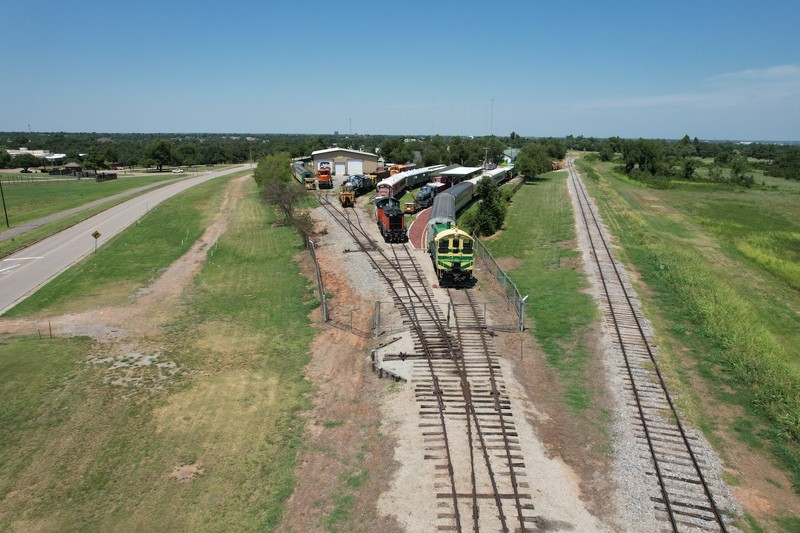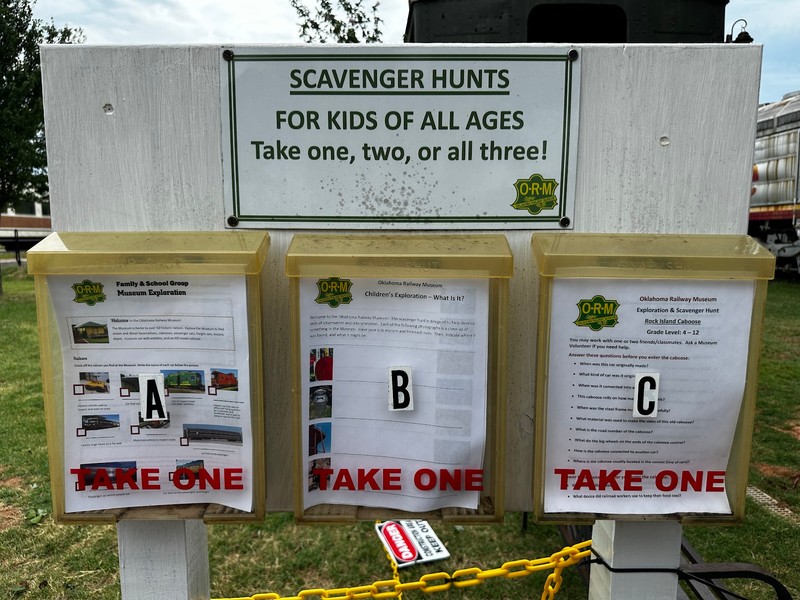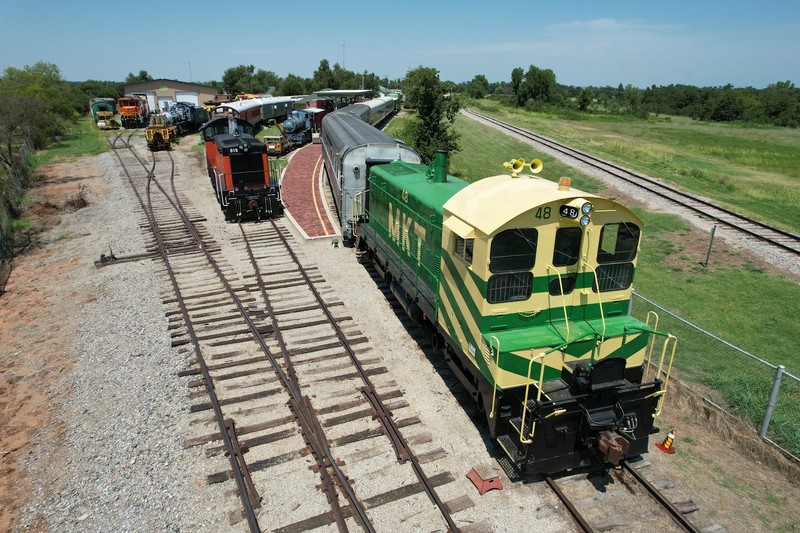This entry includes a walking tour! Take the tour.
Introduction
Text-to-speech Audio
Opened in 2000, the Oklahoma Railway Museum provides an educational experience of railroads and how they shaped Oklahoma and the nation. The museum brings railroad history to life with our antique operating railway and displays of equipment and railroad artifacts.
Images



Backstory and Context
Text-to-speech Audio
The Central Oklahoma Chapter of the National Railway Historical Society (NRHS) was founded in 1970 by railroad enthusiasts who had interests in modeling, photography, historic preservation, and riding trains. In the eighties, the chapter operated the Watonga Chief dinner trains on the AT&L Railroad. In the spring of 1997, the Chapter began working on the establishment of a railway museum. A five-year plan was developed and approved by the members.
A three-acre property was purchased in 1999, and the museum was created. The property was secured with a fence, a parking lot created, restrooms were built, and the master plan for the Museum began to develop. Members raised $50,000 to improve the site, purchase track materials, acquire a 1905 depot, and to make plans to move the engines, freight and passenger cars, and other smaller artifacts to the site. The museum opened to the public in 2000
The Museum’s mission is to provide an educational experience of railroads and how they shaped Oklahoma and the nation. We provide educational programming centered around our operating railway and displays of equipment and railroad artifacts. Between 2000 and the present, the Museum has grown from one operating locomotive to five. The passenger car fleet can handle over 400 passengers per train. Our passenger count grows annually, from approximately 150 in 2003 to over 38,000 in 2019 in addition to thousands of museum visitors.
Today, the Oklahoma Railway Museum is expanding and creating a prototypical railroad site. We will build many aspects of a working railroad including a roundhouse and operating turntable. Additional buildings including a freight house museum building, passenger depot, and a restoration and maintenance facility will all be functional and serve as teaching tools for our visitors and members. Displays of artifacts on our grounds will educate the public on their use by the railroads. Oklahoma Railway Museum’s 20-year master plan features a functional rail yard for the public to experience. As we create our museum complex, we will continue to host events that engage and benefit our community.
Cite This Entry
Anne Murray Chilton on behalf of Oklahoma Railway Museum and Anne Chilton. "Oklahoma Railway Museum." Clio: Your Guide to History. October 19, 2023. Accessed March 29, 2025. https://theclio.com/entry/99945

